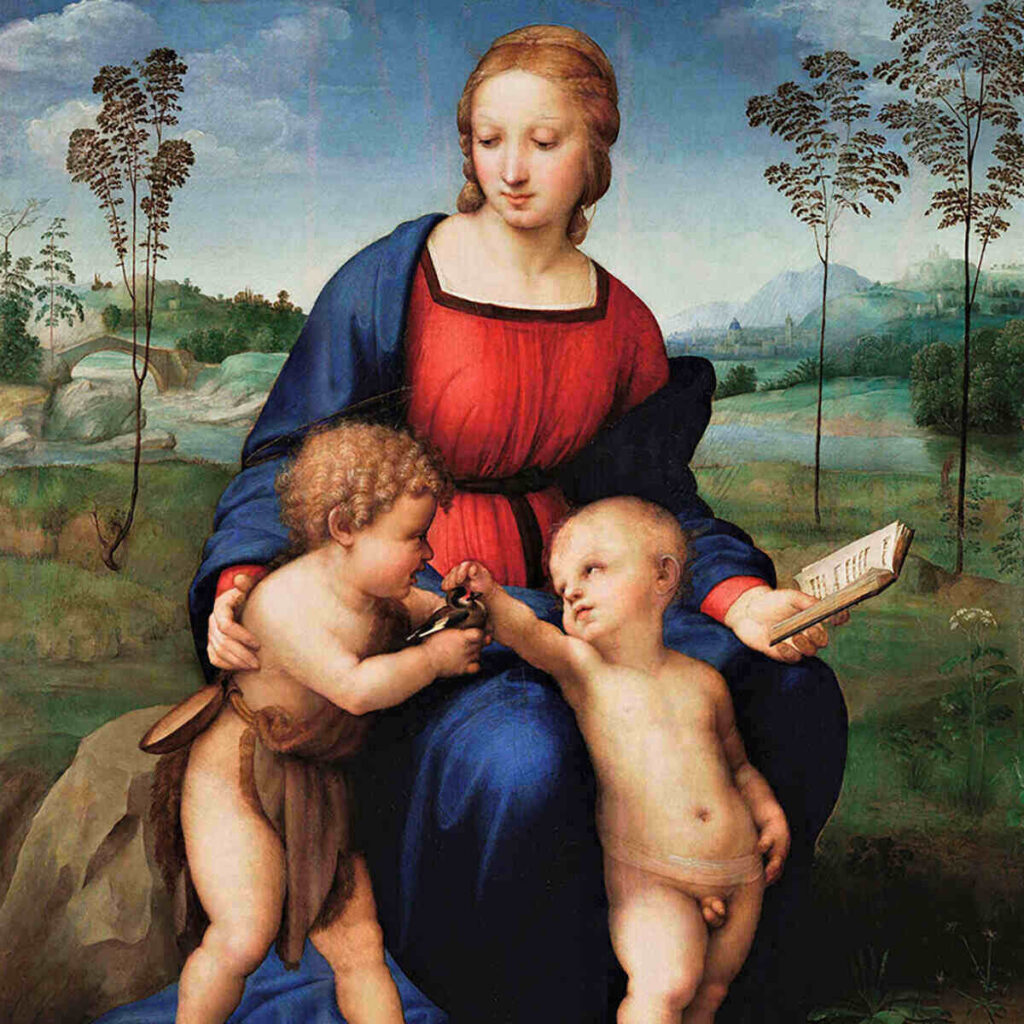THE GALLERY IN FLORENCE
THE GALLERY
OF ARTE DEL PROFUMO®
ACQUA DI FIRENZE®
The Gallery, near an ancient Roman road, is on a small square once called “Piazza del Trebbio”, from the Latin trivium, the crossing of three ways.
Today it is part of Belle donne (beautiful women) street, which runs from the city center to the nearby famous Santa Maria Novella Square.
THE GALLERY
OF ARTE DEL PROFUMO ®
ACQUA DI FIRENZE®
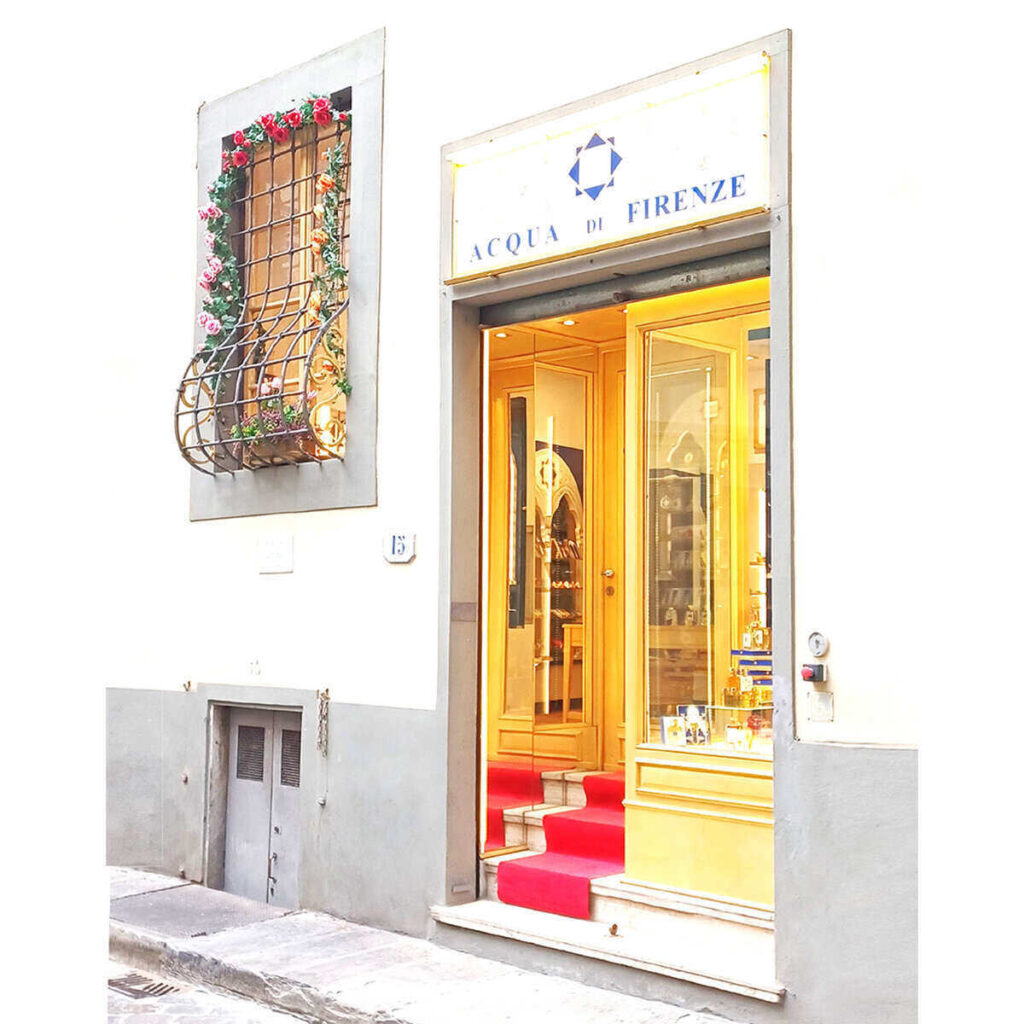
THE WINDOW
“OF BEAUTIFUL WOMEN” ©
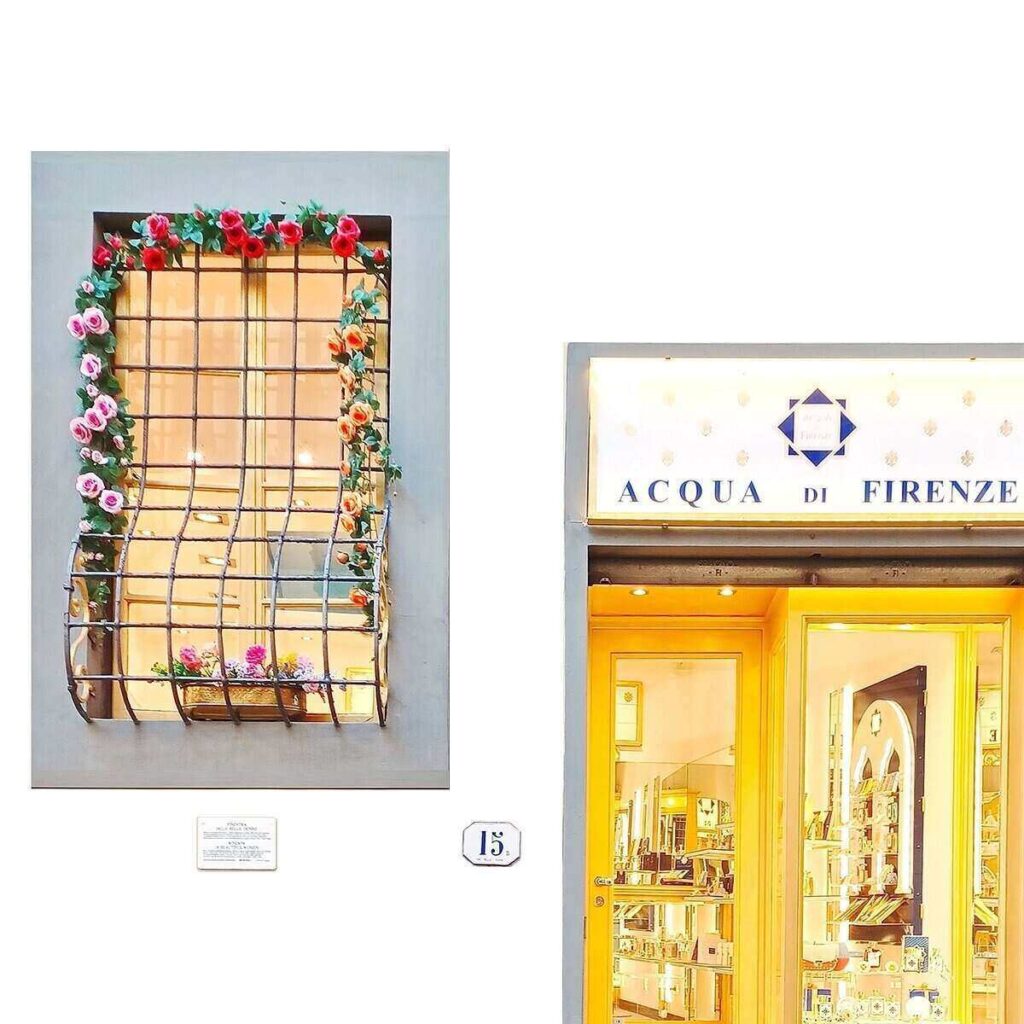
THE WINDOW
“OF BEAUTIFUL WOMEN” ©
The Window of the Gallery is on Belle Donne street.
Florence is famous for the beauty of the women who lived there.
Beatrice, Dante’s muse, probably passed here, as he met her at the nearby Santa Trinita bridge.
The beautiful Simonetta Vespucci, Botticelli’s Venus, lived in the nearby Borgo Ognissanti.
Monna Lisa Gherardini, the Mona Lisa immortalized by Leonardo, also lived nearby.
PANTHEON ROOM
The entrance hall represents life and the universe.
The wood-like floor is the raft, the boat of our life.
All around, on the plinth and on the furniture surfaces, a blue mosaic ribbon is the ocean where the boat of our life flows.
Above, the ceiling represents the sky, with a white disc in the center, which, as in the Pantheon, opens the view towards the Ultra-World. The mirrors on the walls represent ourselves, reflecting on the meaning of our life in the immensity of this Universe.
PANTHEON ROOM
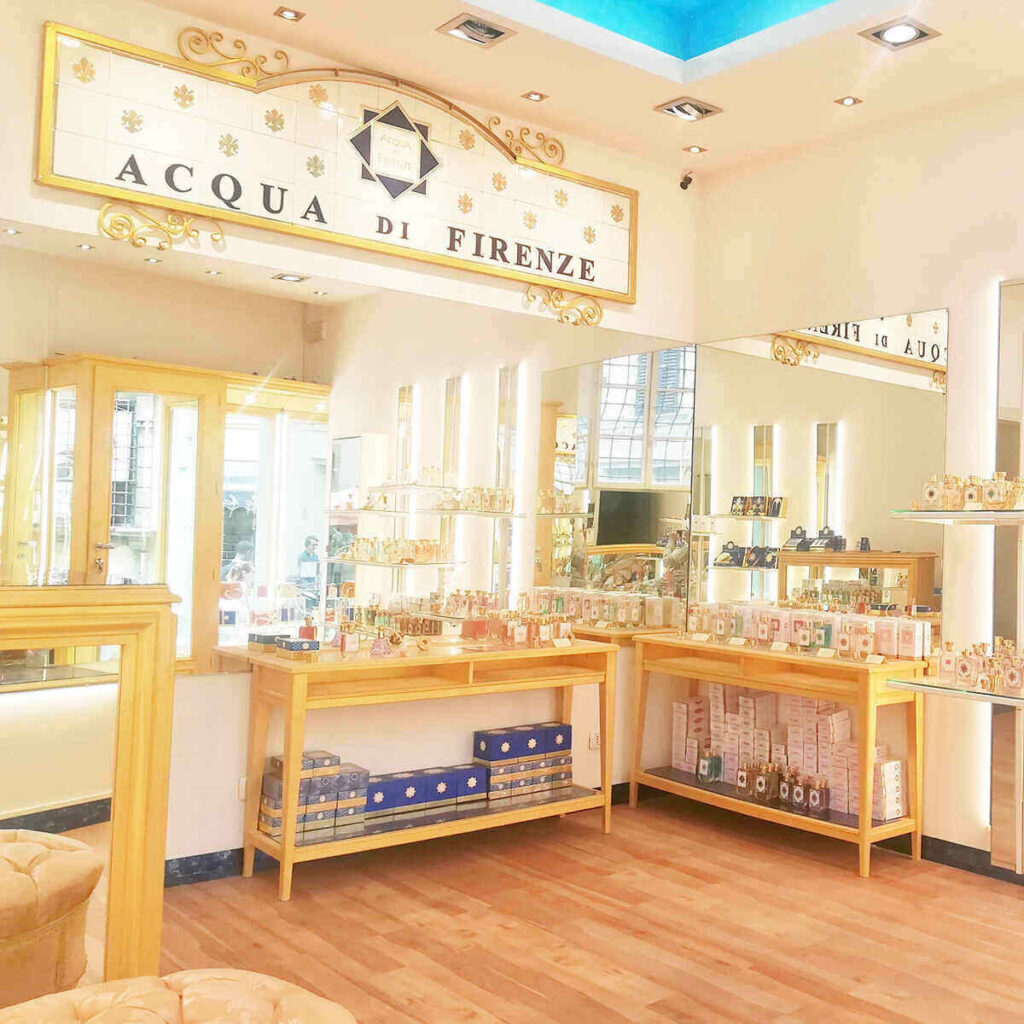
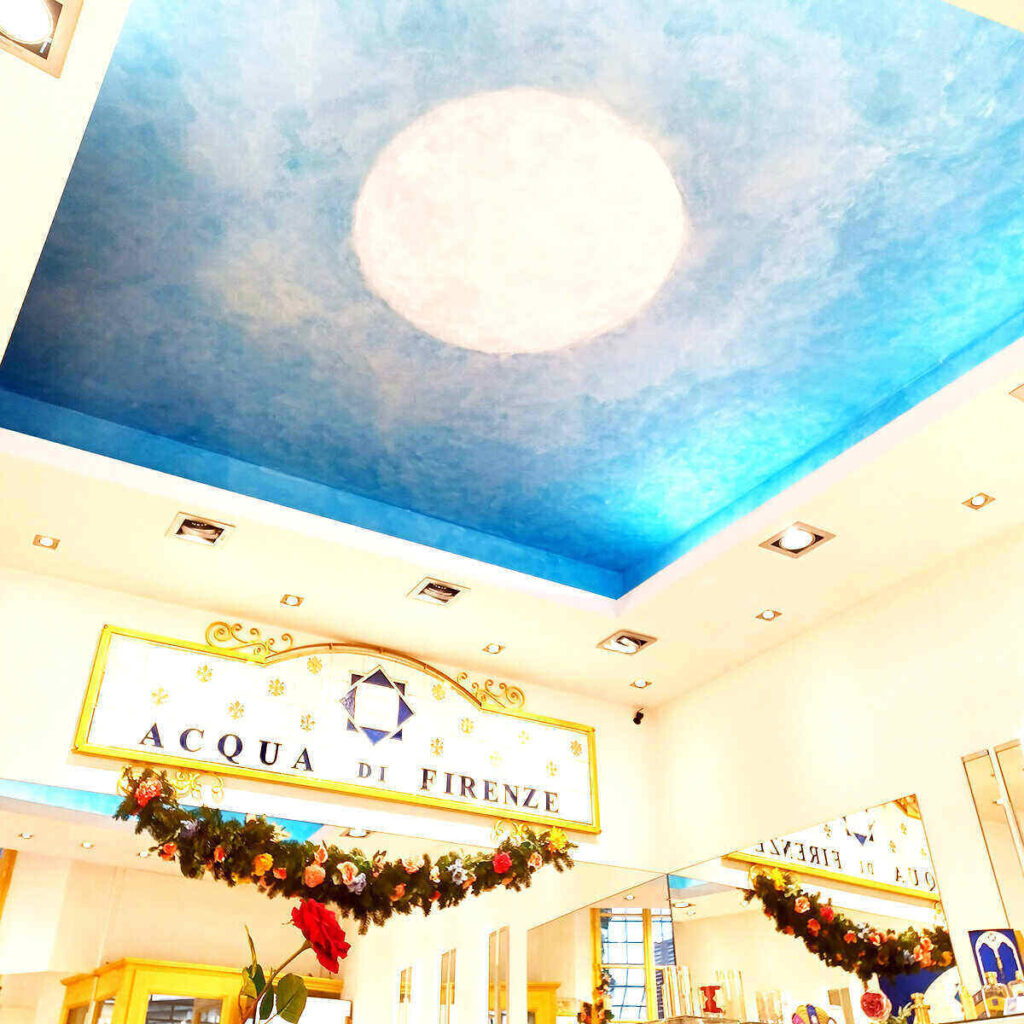
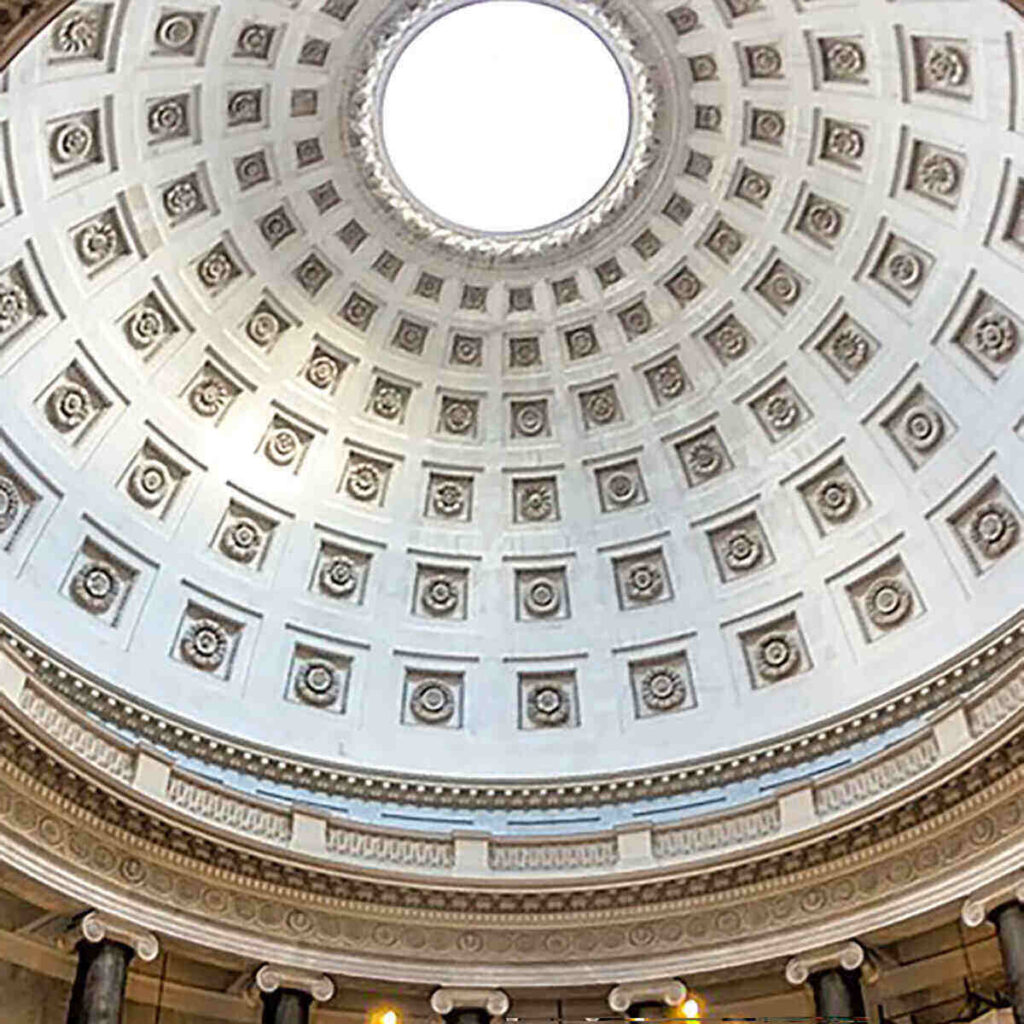
WINDOW OF BEAUTY™
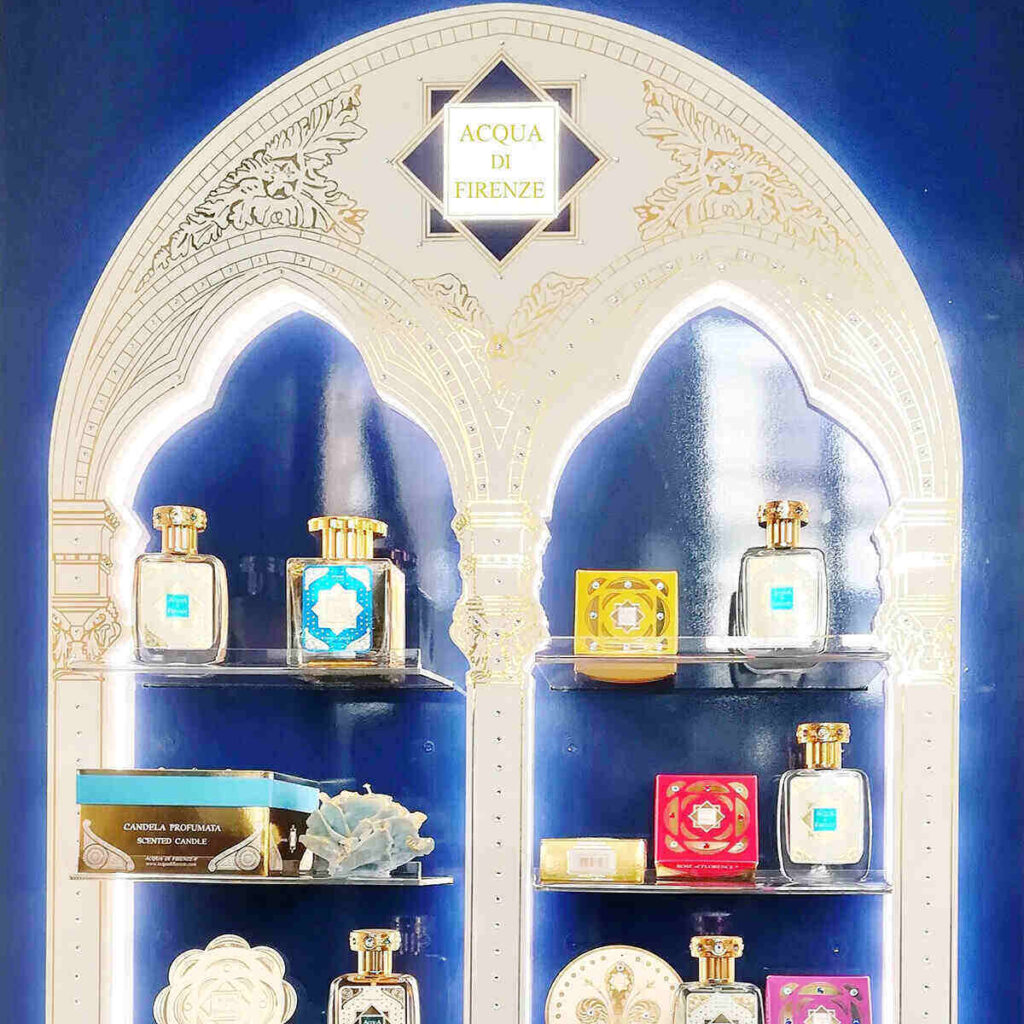
WINDOW OF BEAUTY ™
Between the golden shop window and the shelves with
the creations of ACQUA DI FIRENZE ® , here is the first direct contact with the art of Florence.
The WINDOW OF BEAUTY ™, an artistic display designed by Dario da Firenze® and inspired by fourteenth-century windows of Orsanmichele in Florence.
The art of an extraordinary story acts as a framework for the present and the future of the art of ACQUA DI FIRENZE ®.

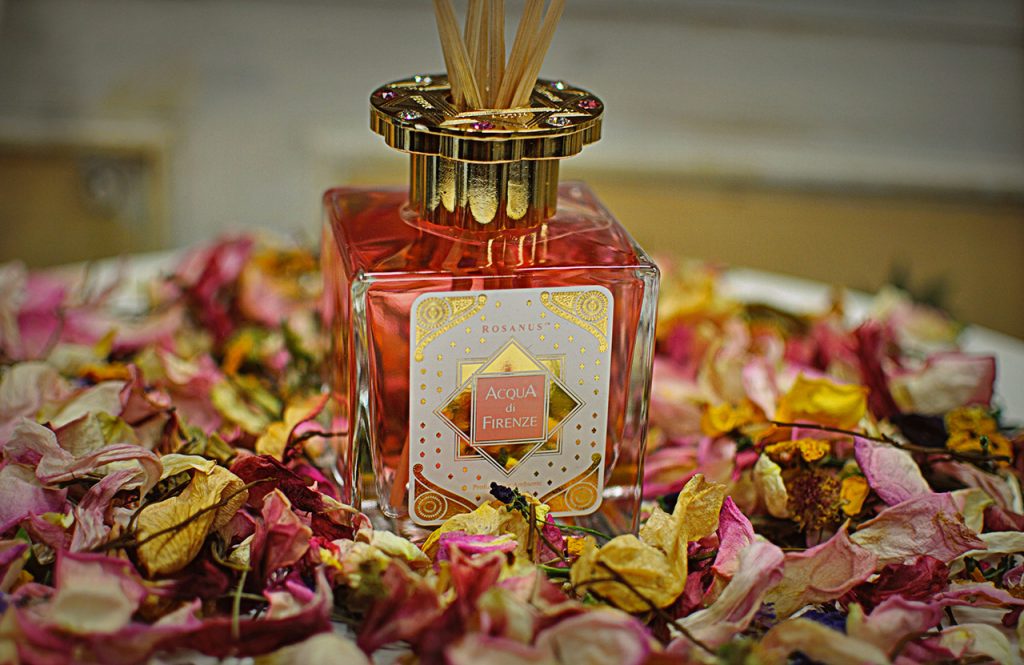

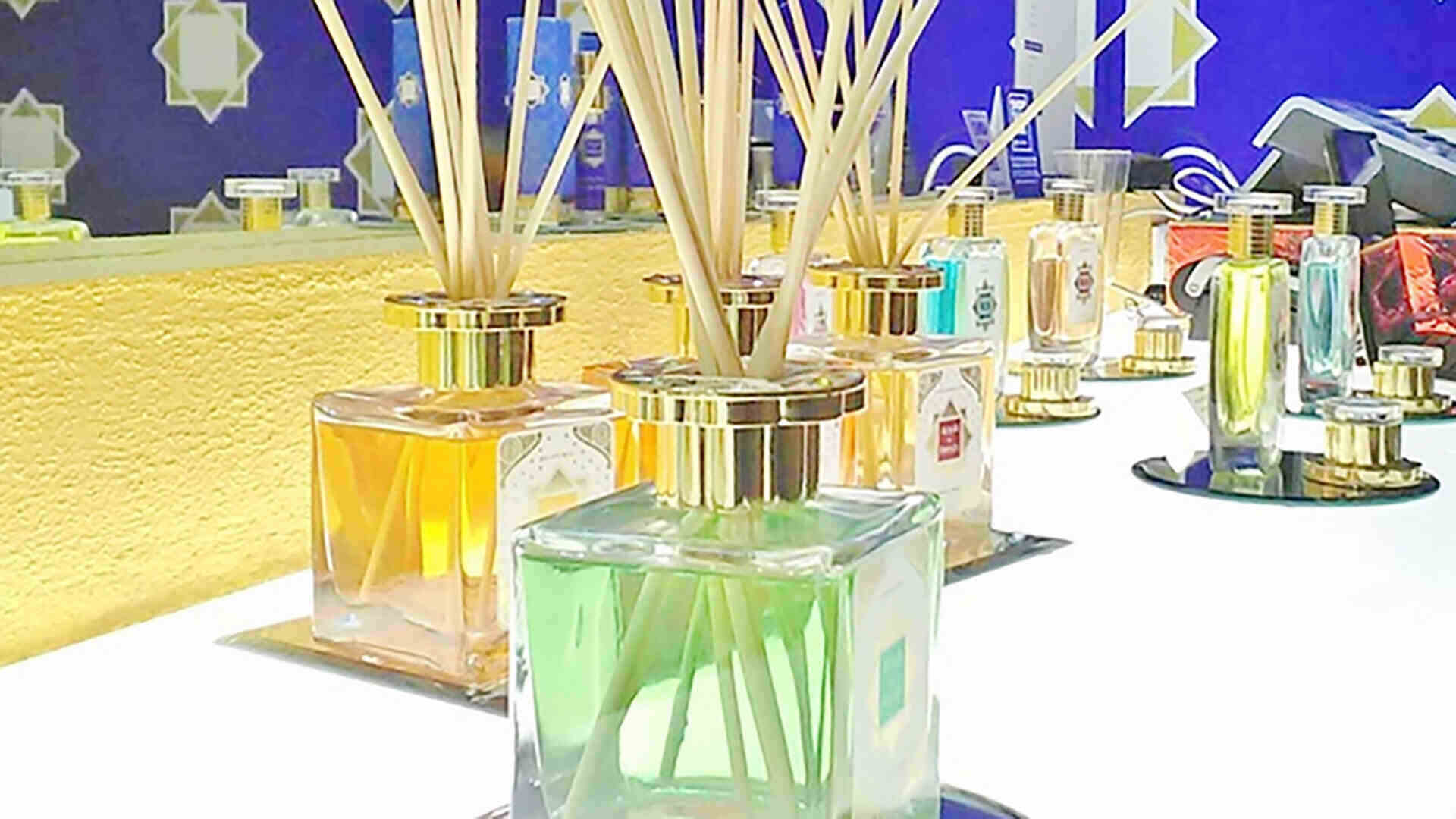
THE MUSEUM
OF ART OF PERFUME®
in Florence
THE FIRST OLFACTORY ARTISTIC MUSEUM
Florence, where modern perfumery was born, offers visitors from all over the world the first Olfactory Artistic Museum, which tells the history of perfumes
connected with the history of works of art and with an olfactory journey.
ROOMS
1
ENTRANCE
The first room is the same Sala Pantheon as the entrance to the Gallery. Here is the introductory part of the Museum, dedicated to ancient civilizations.
The light, which comes from the sky visible from the
Window of the Beautiful Women, and ideally also from the opening in the ceiling, as in the Pantheon,
guides the visitor to enter the Museum.
1
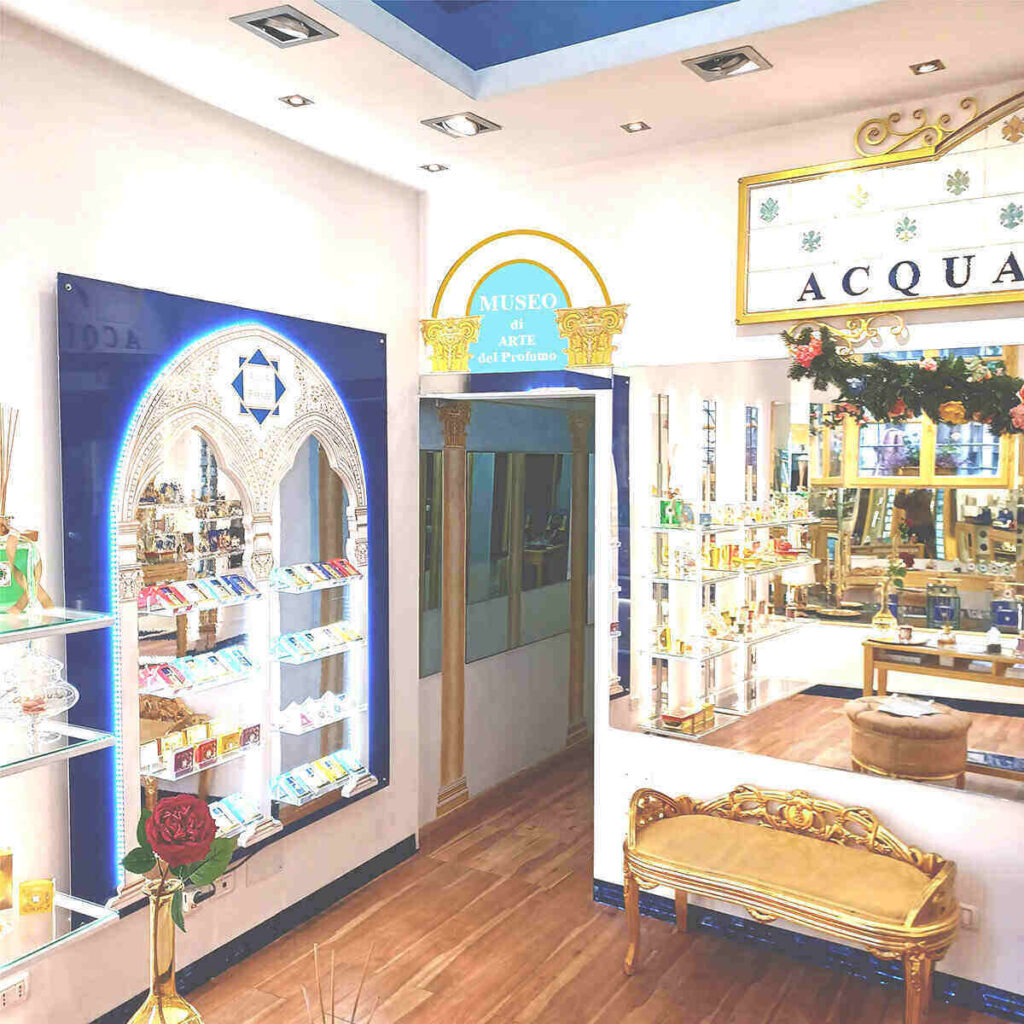
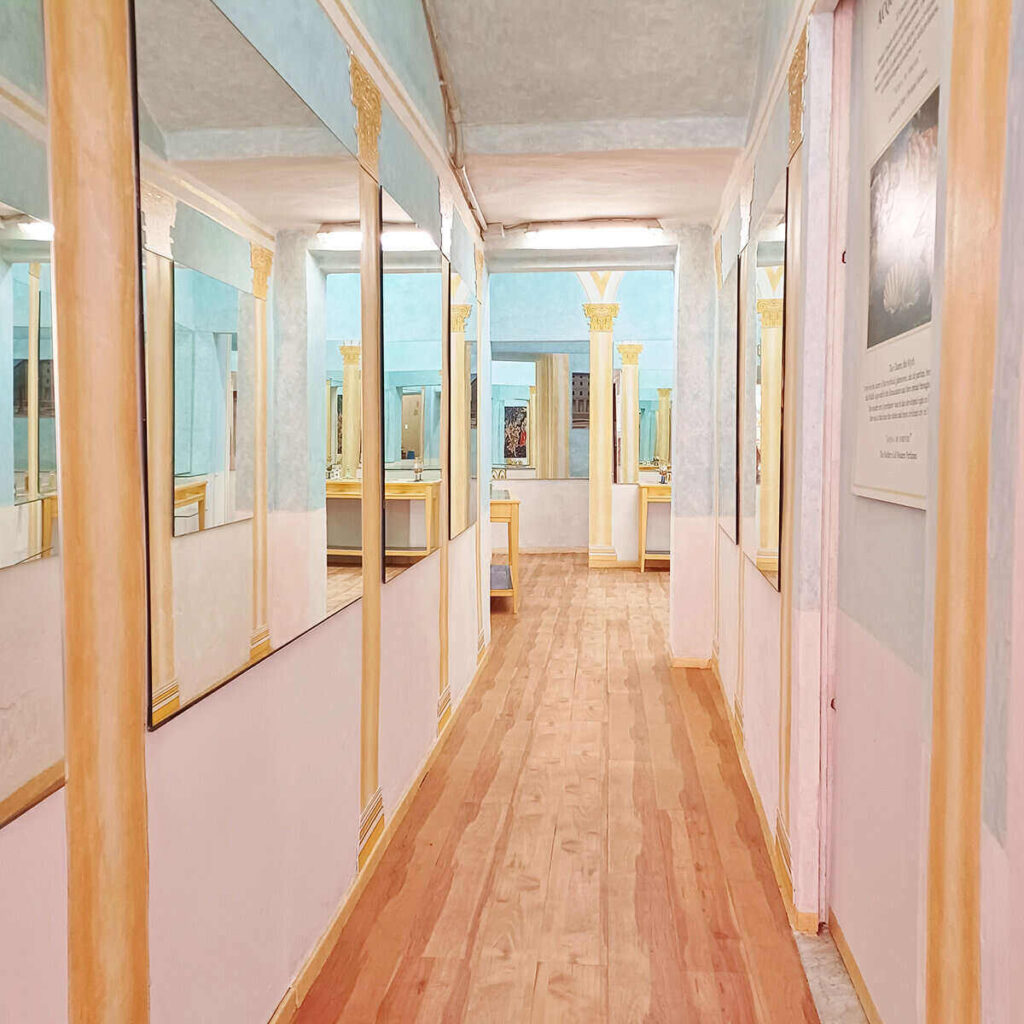
2
PORTICO OF VENUS
The portico of Venus, with elegant designs of composite columns, marks the transition from the ancient to the modern age, in the sign of Venus, the goddess of beauty.
Venus, the Greek Aphrodite, would have been born, according to the prevailing myth, in Cyprus, a famous perfume center of ancient times, which with its cosmetic products, such as face powder, will remain important even in later times and will also inspire modern perfumes.
In the portico, a reproduction of Venus rising from the sea, painted by Botticelli in the second half of the 15th century and preserved in the Uffizi Gallery as one of the masterpieces of the Renaissance.
The visitor, surrounded by mirrors, crosses the portico as an initiatory path to reflect on the scent of time and on the relationship between perfume, man, divinity and the idea of beauty.
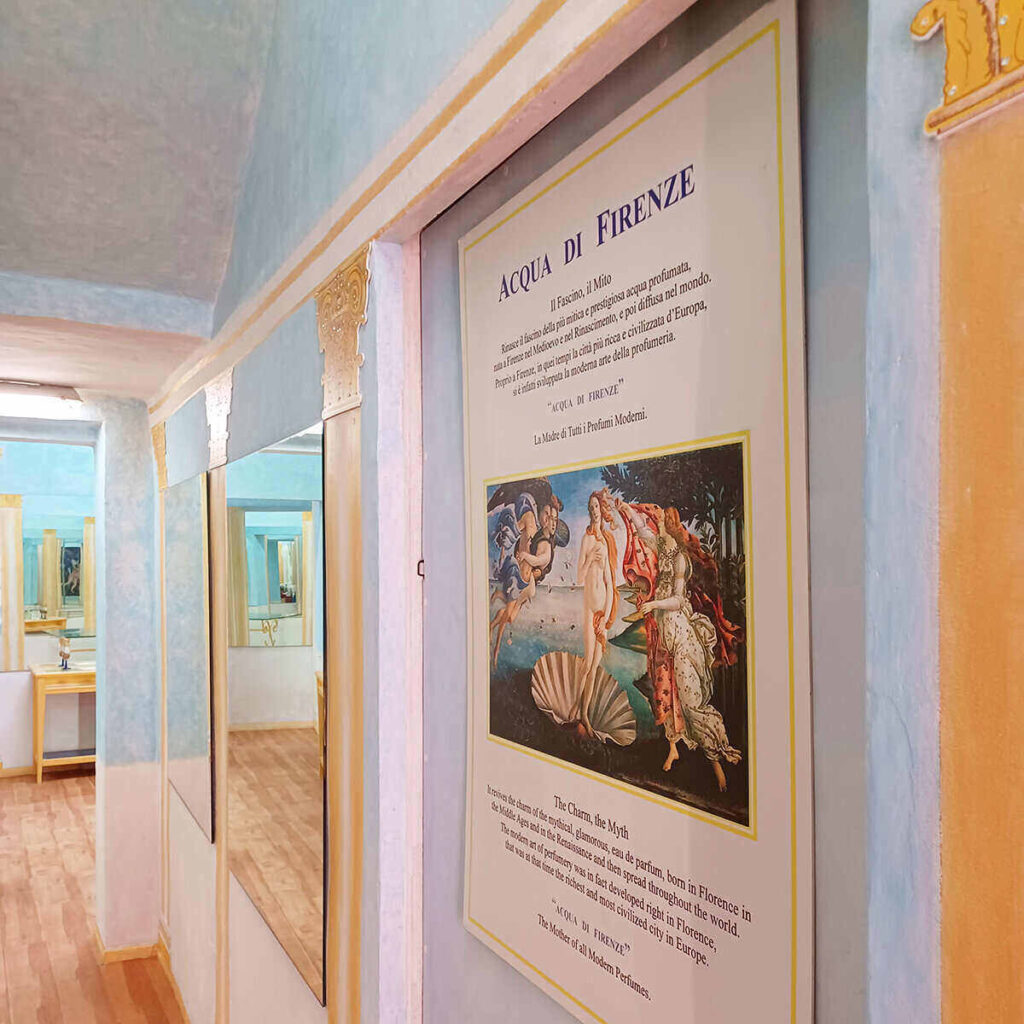
3
CLOISTER OF PARADISE
The Cloister of Paradise, also decorated by Dario da Firenze®, represents spiritual liberty, open to the infinity of space and time, combining two fascinating Renaissance ideas:
a) The ideal place of supreme harmony.
b) The octagonal chamber of mirrors,
by Leonardo da Vinci.
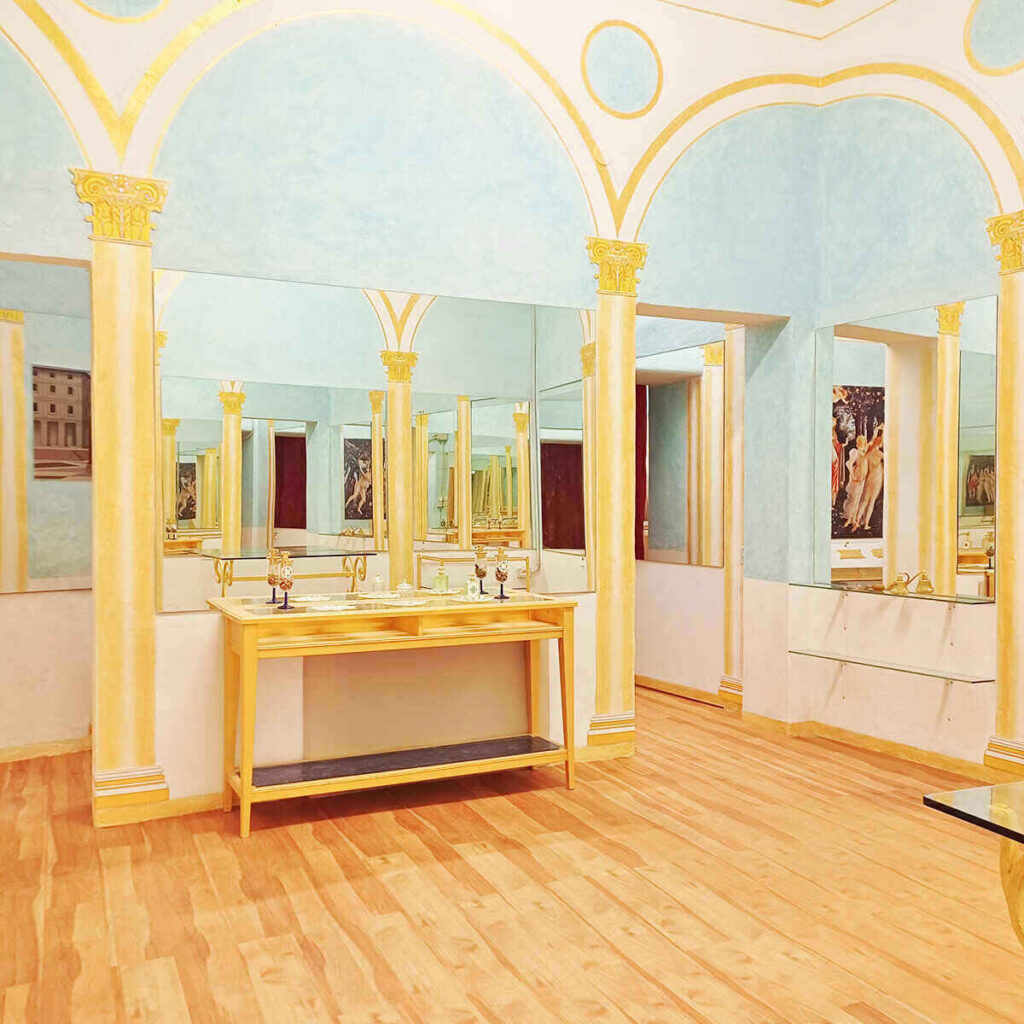
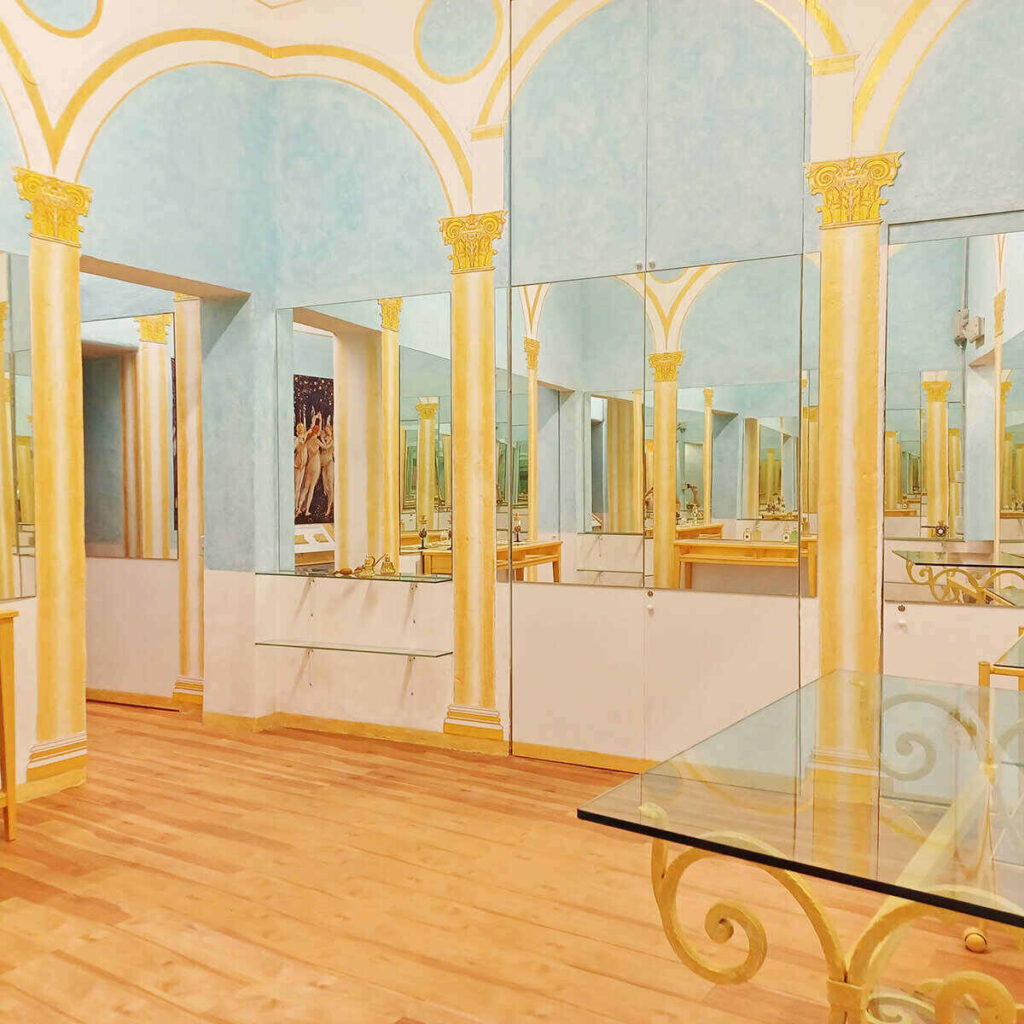
a) The ideal place of supreme harmony, is represented by a Renaissance cloister with 8 sides and 8 columns.
The symbol of the octagon, also present in the ACQUA
DI FIRENZE ® logo, was used since ancient times to
represent the maximum balance and contact between God
(the circle) and man, matter (the square).
To depict an octagonal cloister in a square room, corner arches were used, which offer this optical illusion.
The arches of the Cloister of Paradise open
on the sky, with a homogeneous light.
The work aims at a rarefied and celestial atmosphere
similar to that of the Crucifixion by Pietro Perugino, fresco in the chapter house of the former convent of Santa Maria Maddalena dei Pazzi in Florence, datable to 1494-1496.
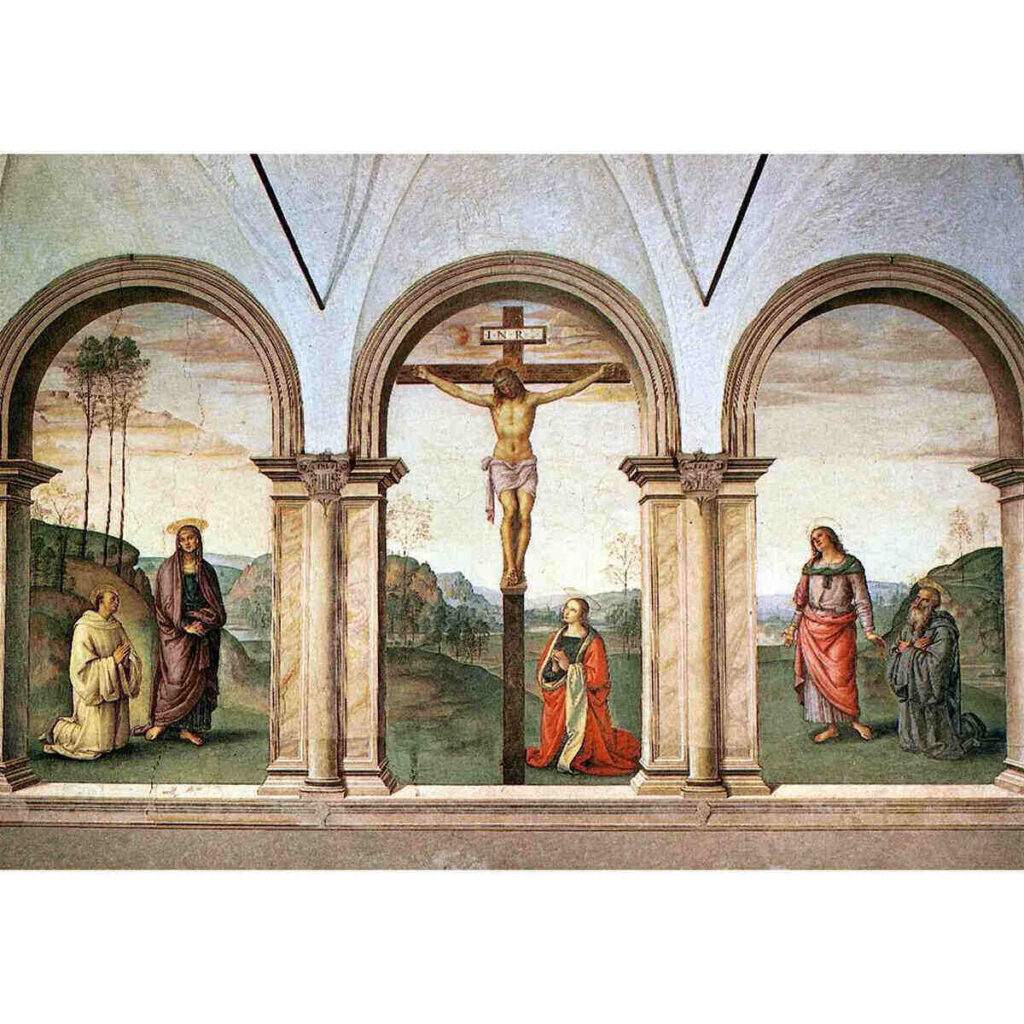
The shape of the columns and arches of the Cloister of Paradise instead refers to the portico of the Innocents, designed in Florence by Brunelleschi, a masterpiece and model of the early Renaissance.
The tondos above the arches, which open onto the blue sky of the Cloister of Paradise, recall the tondos in glazed terracotta added to the portico of the Innocents by Andrea della Robbia at the end of the 15th century.
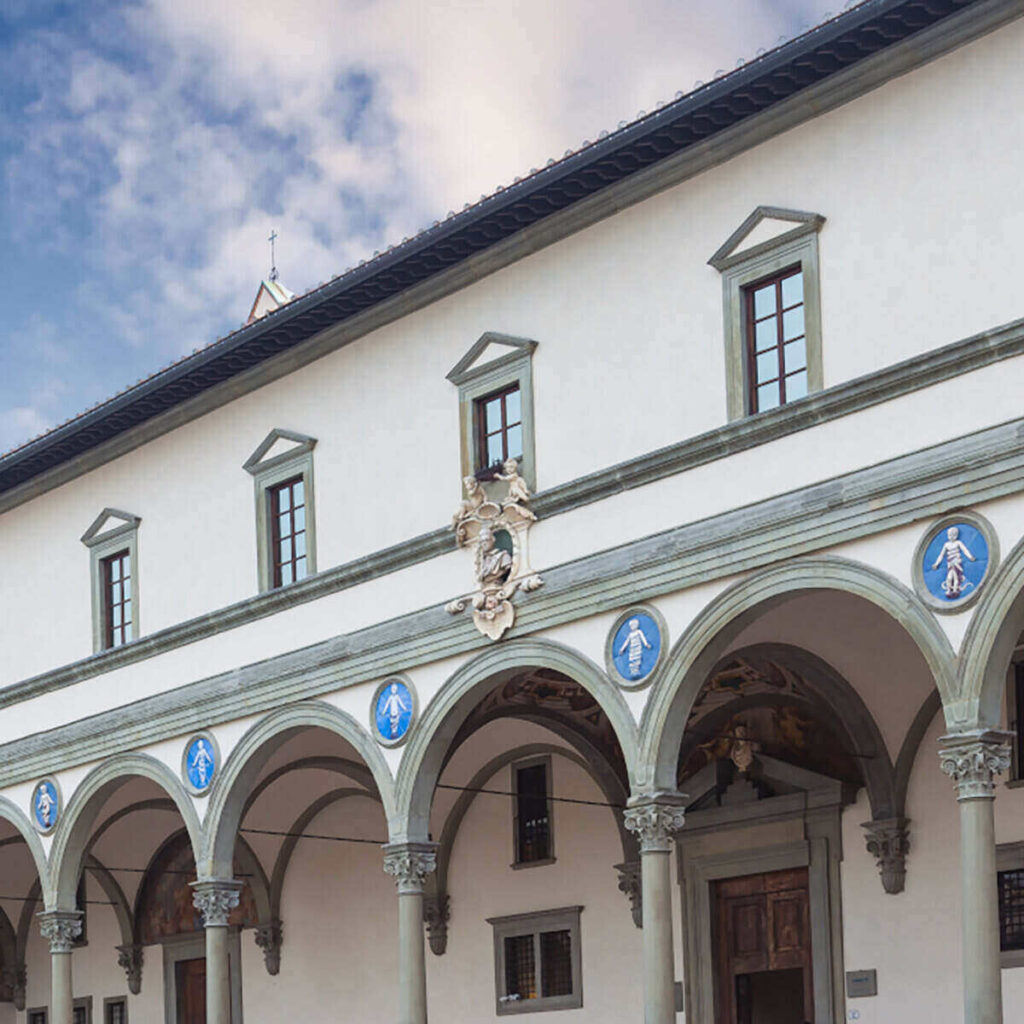
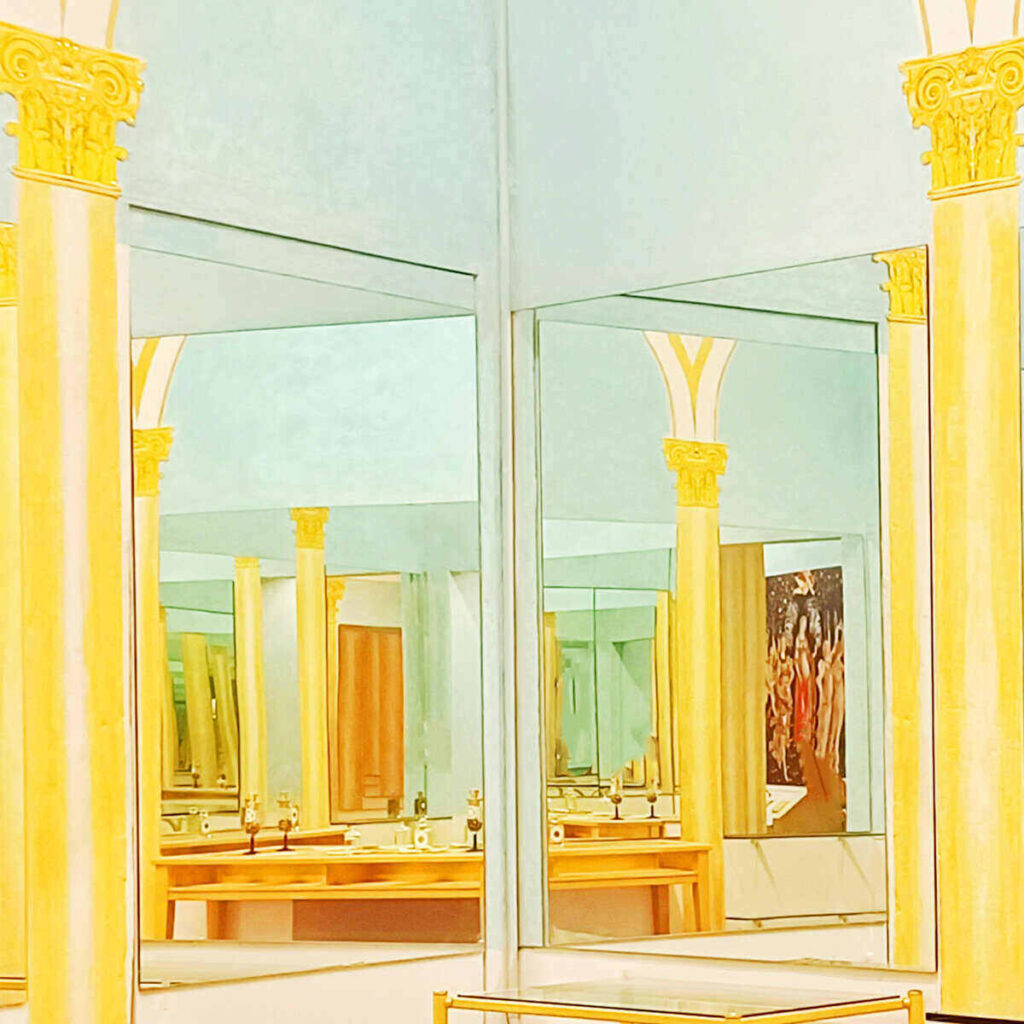
b) The other inspiring idea is that of the octagonal chamber of mirrors, by Leonardo da Vinci, that sends the images back to infinity.
A place at the same time closed but infinite, where the mind goes beyond the limits of dimensions of space and time.
4
THE PERFUMER’S STUDIO
The studiolo (little studio) is where the perfumer,
isolating himself with his table and essential oils, creates its own fragrances.
Two masterpieces of the Florentine Renaissance of the 15th century accompany him in this secret and fascinating place:
– Botticelli’s Spring, which represents the richness of nature, who offers, with its gifts, the basis for essences;
– the Ideal City, a perfect perspective that enhances every part of it and where everything is in harmony,
as an ideal model of perfect perfume.
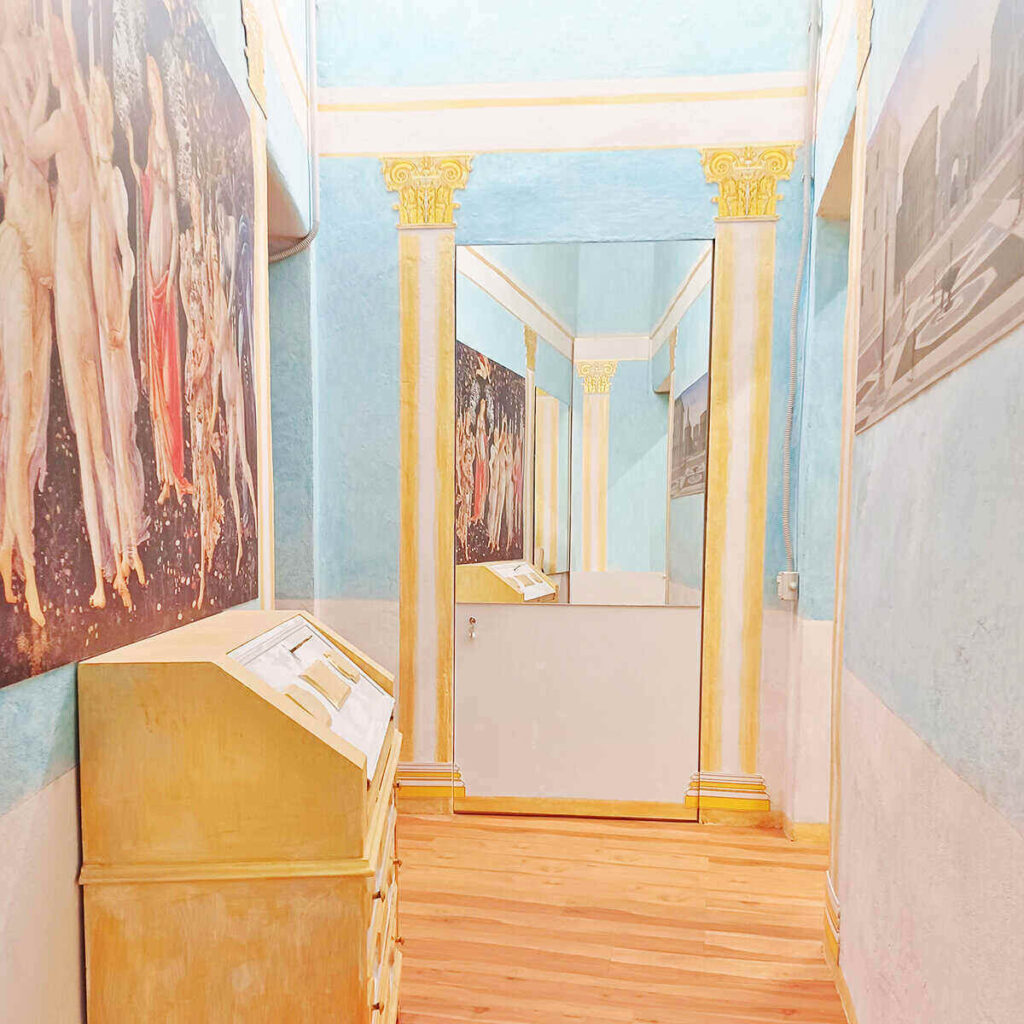
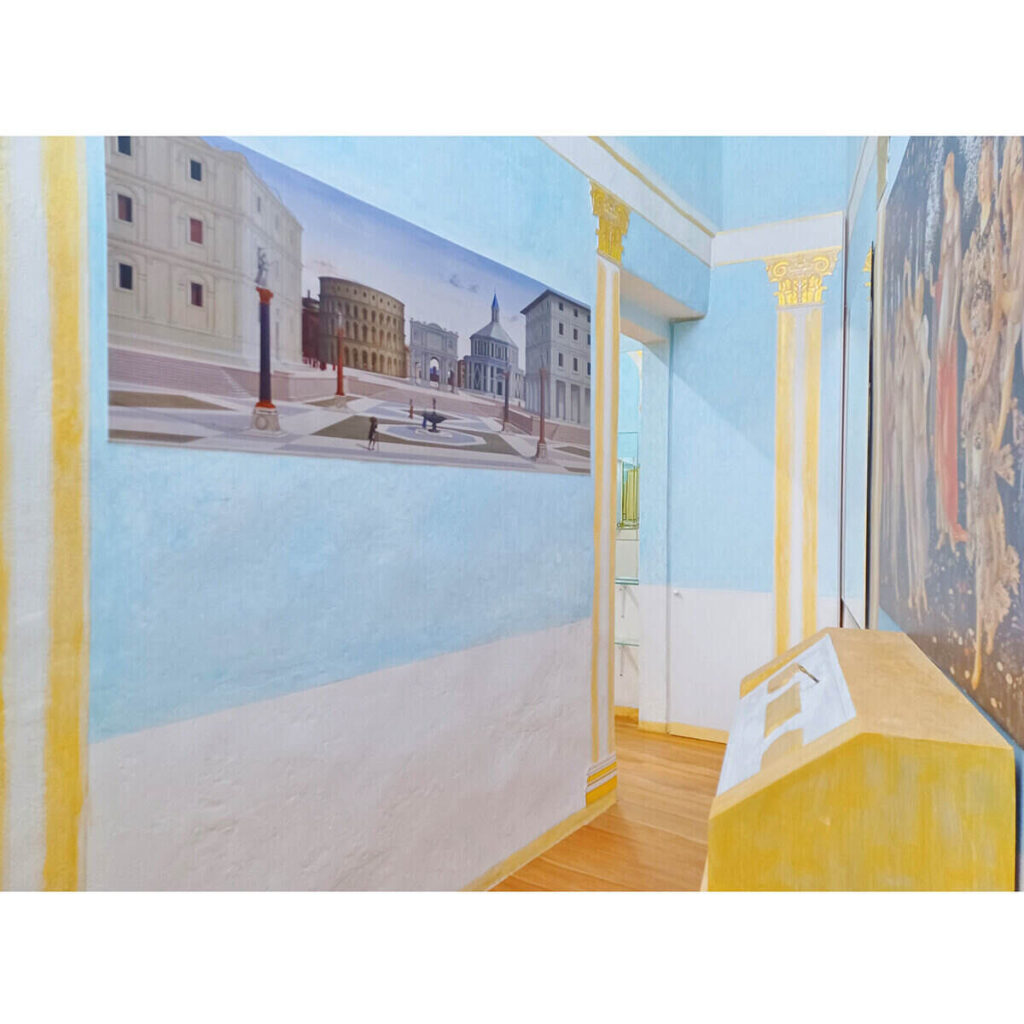
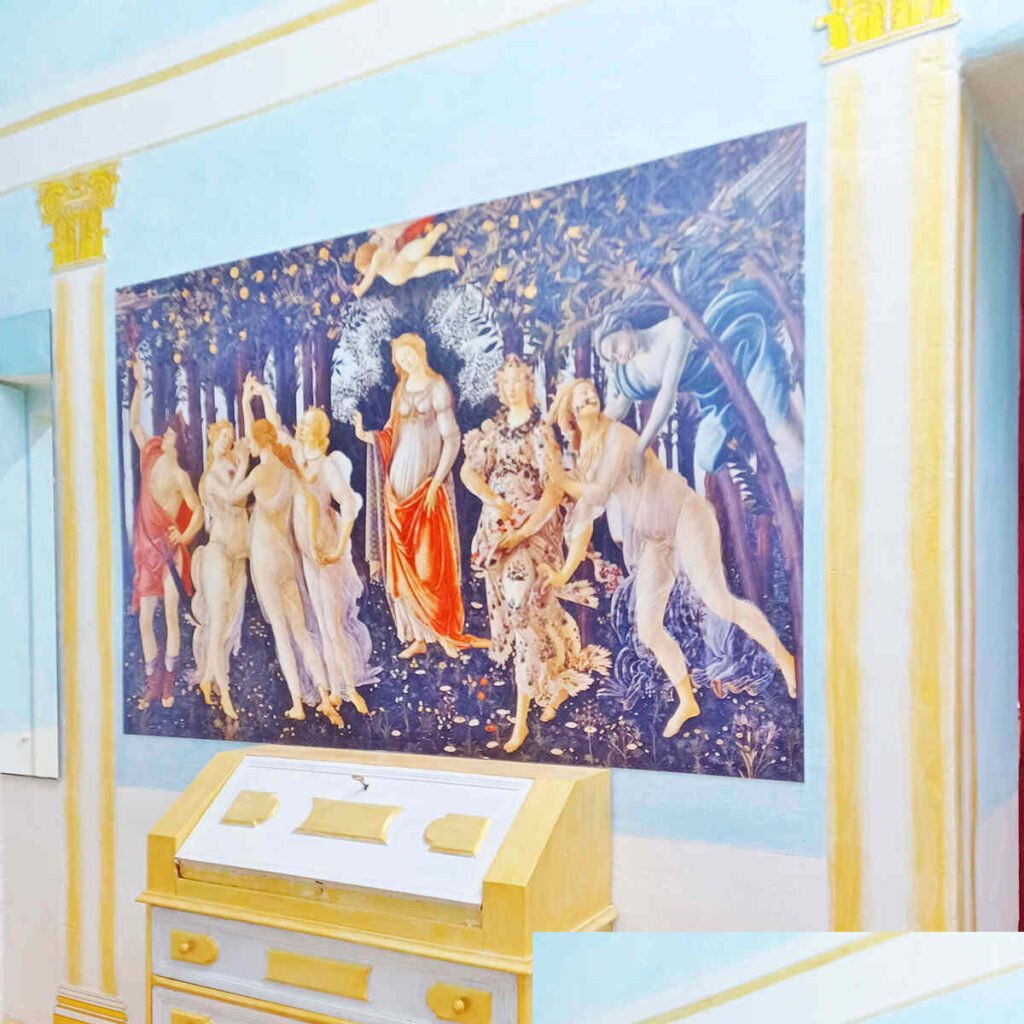
The studiolo is inspired by those of the first Grand Dukes of Tuscany, of Cosimo I and, above all, of Francesco I dei Medici.
They are restricted, reserved places, surrounded by works of art and with secret wardrobes, where you can escape time and space and enter an abstract dimension, opening up to knowledge, beauty, creativity and reflection.
The studiolo of Francesco I dei Medici, in particular, in the Palazzo della Signoria, in Florence, is also considered the first modern museum.
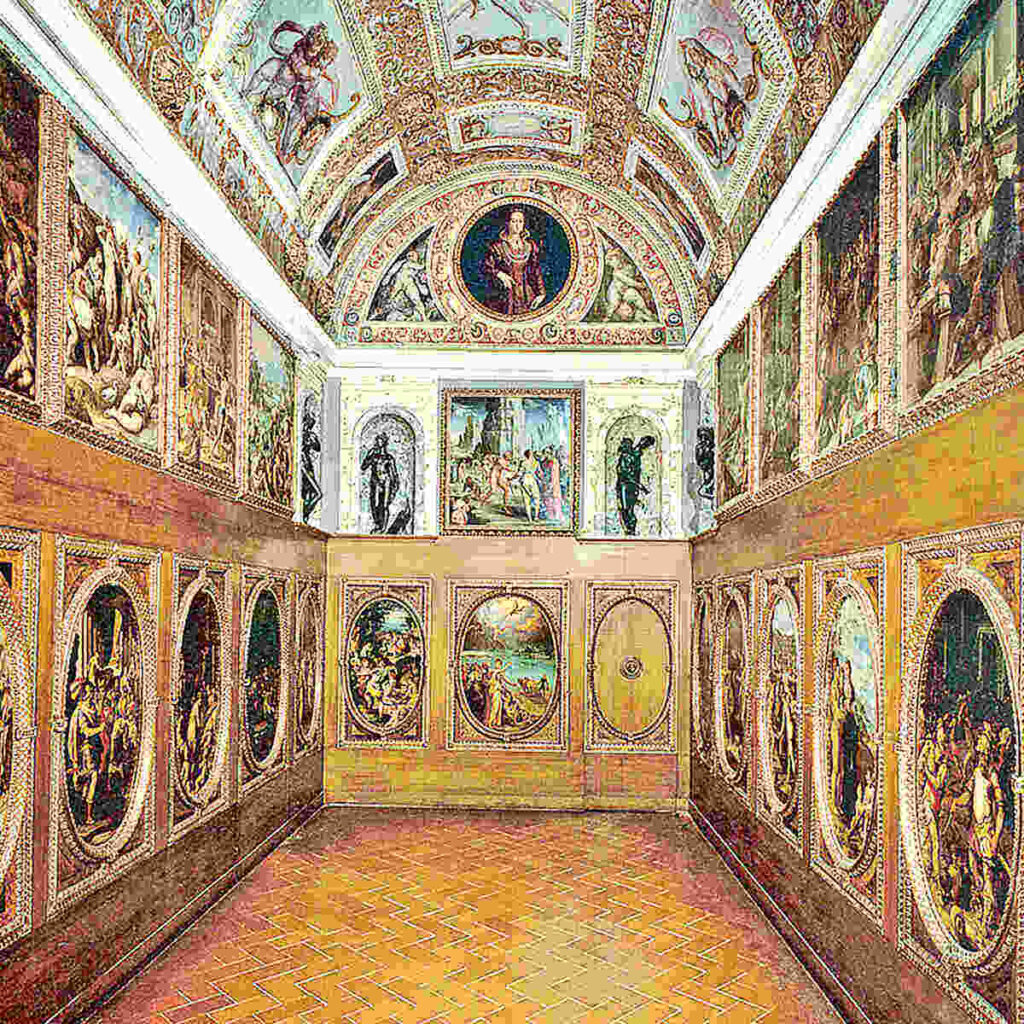
From the idea of Francesco I dei Medici’s studiolo
the octagonal Tribuna of the Uffizi will develop,
the heart of the Uffizi Gallery.
A place to concentrate and compare the beauty and art of the past and present, and feel immersed in amazement and wonder.
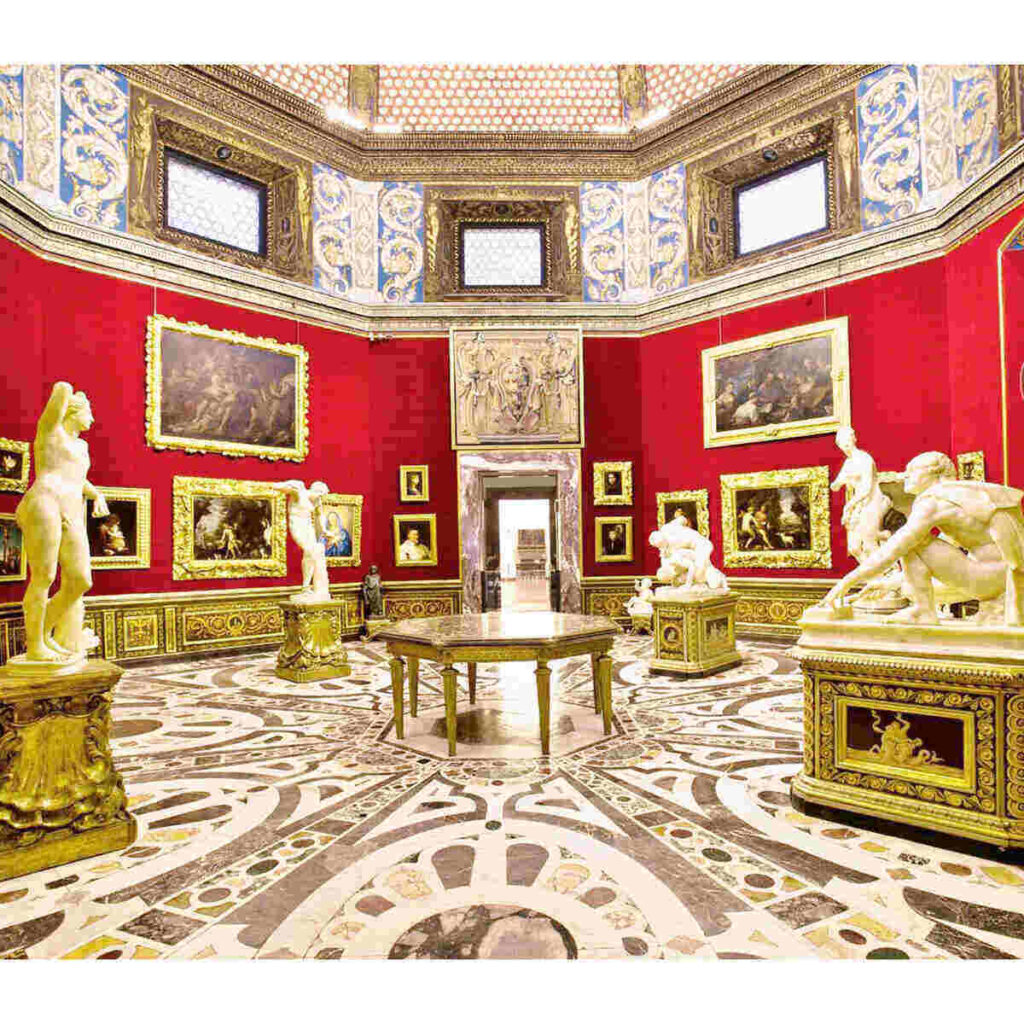
5
THE ENCHANTED LIBRARY
From the Perfumer’s Studiolo you can access the
enchanted Library, decorated like a Renaissance cloister.
Between the gilded columns and the mirrors, the
reproduction of a masterpiece by Raphael, the Madonna of the Goldfinch, painted in Florence around 1506.
A suspended, magical atmosphere, where perfume books make you think and dream.
Art inspires Art.
The perfume of Beauty passes in the air.
